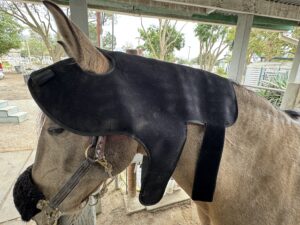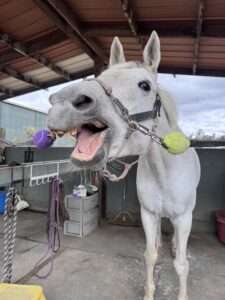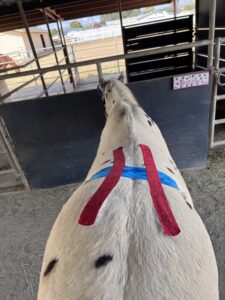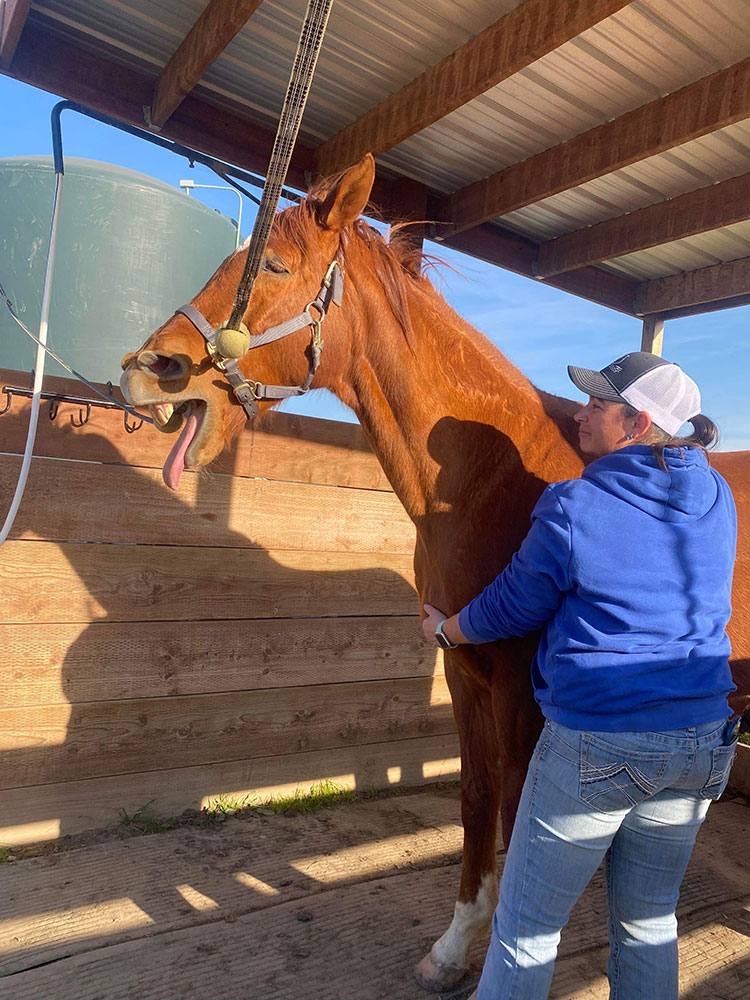Unlock Lasting Wellness and Performance for Your Horse
Introduction: Expectation vs. Reality of Equine Massage
As horse owners and  equestrians, we strive to provide the best care for our equine athletes. The idea of a single massage session acting as a quick fix for soreness, tightness, or behavioral changes is appealing. However, while one session can bring immediate relief and relaxation, lasting results and true wellness require a consistent, long-term approach. Ongoing equine massage therapy is essential for your horse’s health, comfort, and peak performance. Unlock lasting wellness and performance for your horse while we dive into why one massage isn’t enough and how regular bodywork benefits horses.
equestrians, we strive to provide the best care for our equine athletes. The idea of a single massage session acting as a quick fix for soreness, tightness, or behavioral changes is appealing. However, while one session can bring immediate relief and relaxation, lasting results and true wellness require a consistent, long-term approach. Ongoing equine massage therapy is essential for your horse’s health, comfort, and peak performance. Unlock lasting wellness and performance for your horse while we dive into why one massage isn’t enough and how regular bodywork benefits horses.
First, I want you to think about something. You walk out to barn; you pull out your un-started 3-year-old, throw a saddle on them, and climb up for a ride. The next day you head to a horse show. How did that go for you?
Now let’s talk about why a single massage session isn’t beneficial for your equine athlete.
How Muscle Tension Develops and Releases
Muscle tension in horses rarely appears overnight. It is often the result of months or years of repetitive movements, compensations, improper posture, or previous injuries. This tension becomes  “layered,” with deeper muscles retaining stress long after surface tightness has eased. One massage session may relax superficial muscles, but regular massage sessions would be required to reach and release these deeper layers. Each session builds on the last, gradually restoring true freedom of movement and balanced muscle patterns.
“layered,” with deeper muscles retaining stress long after surface tightness has eased. One massage session may relax superficial muscles, but regular massage sessions would be required to reach and release these deeper layers. Each session builds on the last, gradually restoring true freedom of movement and balanced muscle patterns.
Limitations of a Single Session
· Temporary Relief: The first massage may help relax superficial muscles and increase circulation, but deeper issues often remain unaddressed.
· Chronic Conditions: Muscle tightness, knots, or scar tissue that have developed over time require multiple sessions for significant improvement.
Assessment and Adjustment: The 1st session allows me to assess your horse’s condition, but a treatment plan is needed for lasting change.
Movement Relearning: Muscle Memory and Fascia
Horses develop muscle memory based on their habits, training, and even past discomfort. The fascia—a web of connective tissue—can become rigid and restrict movement. A single massage might help relax muscles, but it will not retrain the horse’s body to move optimally. “Knots” in the fascia will at the very least return or remain in the body. Consistent sessions help “reset” muscle memory and promote healthy fascia, guiding your horse toward improved posture, balance, and flexibility.
The Process of Rehabilitation and Maintenance
Massage therapy is most effective when incorporated into a regular care routine. Initial sessions focus on loosening tight muscles and relieving pain, while follow-up sessions build on these improvements, address underlying causes, and prevent recurrence. Routine bodywork supports recovery from injuries and enhances athletic performance, helping horses move more fluidly and comfortably.
Benefits of Ongoing Massage Therapy
· Progressive Improvement: Each session enables deeper work and longer-lasting results, gradually restoring normal muscle function.
· Prevention: Regular massage helps identify and resolve minor issues before they develop into major problems.
· Performance Optimization: Horses in training or competition benefit from ongoing therapy to maintain flexibility, mobility, and comfort.
Mental Well-being: Horses often become more relaxed and cooperative with repeated sessions, as trust builds between horse and therapist.
· Support for Recovery: Regular sessions aid in faster and more complete recovery between training sessions or competitions.
· Reduced Risk of Soreness: Ongoing massage reduces the likelihood of chronic pain or injury by supporting healthy tissue.
Longevity: Preventative care protects your horse’s long-term soundness and ability to perform at their best.
Circulation, Recovery, and Tissue Health
Massage therapy stimulates circulation, delivering oxygen and nutrients to tissues while flushing out metabolic waste. Enhanced blood flow supports recovery from exercise and injury and helps prevent future issues. The benefits of improved circulation are cumulative—each session gradually promotes healthier, more resilient muscles and connective tissue. Sporadic massages provide only temporary support; regular bodywork fosters lasting wellness.
Prevention vs. Repair: The Value of Routine Bodywork
Many horse owners seek massage after noticing a problem, but regular sessions can help prevent those issues from arising in the first place. Routine bodywork maintains muscle suppleness, keeps fascia flexible, and supports joint health. By catching and releasing tension early, you can avoid more significant discomfort, performance setbacks, and costly veterinary interventions down the road. Think of equine massage as an investment in prevention, not just repair.
Individualized Approach: Tailoring Massage Plans
Every horse is unique—age, discipline, conformation, lifestyle, and temperament all affect their bodywork needs. Effective equine massage therapy isn’t “one-size-fits-all.” Ongoing sessions allow me as your bodyworker to get to know your horse, monitor progress, and adjust techniques to address specific issues. Customized plans ensure your horse gets the targeted care they need for optimal health and happiness.
Consistency Creates Results
If your goal is a sound, supple, and responsive athlete, consistency is key. Just as you commit to regular training and conditioning, your horse benefits from routine bodywork. It’s how you support their comfort,  performance, and overall well-being—showing up for them as they show up for you.
performance, and overall well-being—showing up for them as they show up for you.
Conclusion: The Importance of Ongoing Sessions
While a single equine massage session can provide short-term comfort, true transformation happens over time. Layered tension releases gradually, muscle memory is retrained, and tissue health improves cumulatively. Regular massage supports not just recovery, but prevention—giving your horse every opportunity to move, perform, and feel their best.
Invest in Long-Term Wellness
Ready to invest in your horse’s long-term health and happiness? Choose professional, personalized massage therapy designed for your horse’s individual needs. Experience the difference that regular, expert bodywork can make and unlock lasting wellness and performance for your horse. Contact SLBH Equine Bodywork today to schedule a consultation and begin your horse’s journey toward lasting wellness.
Call: 408-607-9491
Visit: slbhequinebodywork.com

